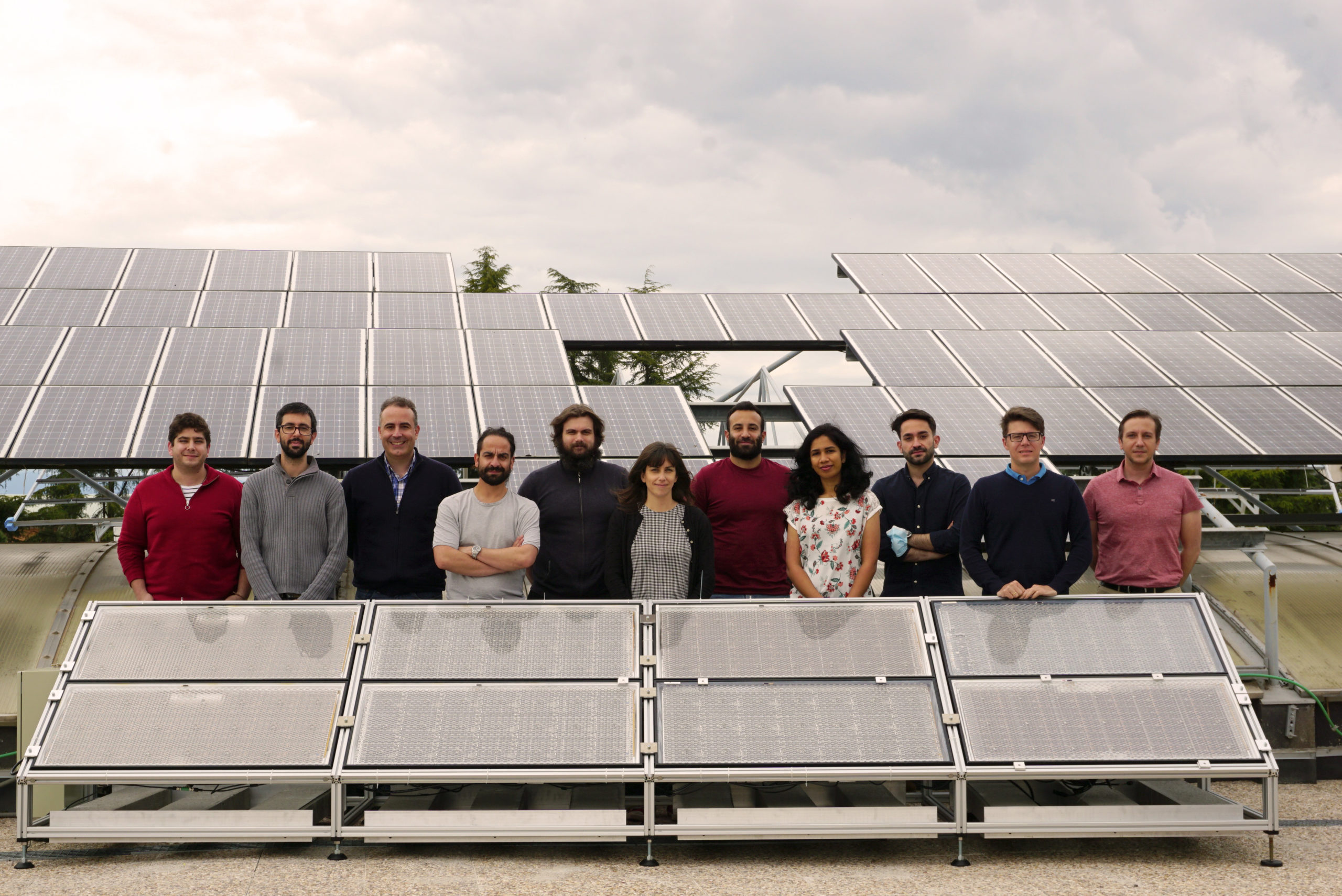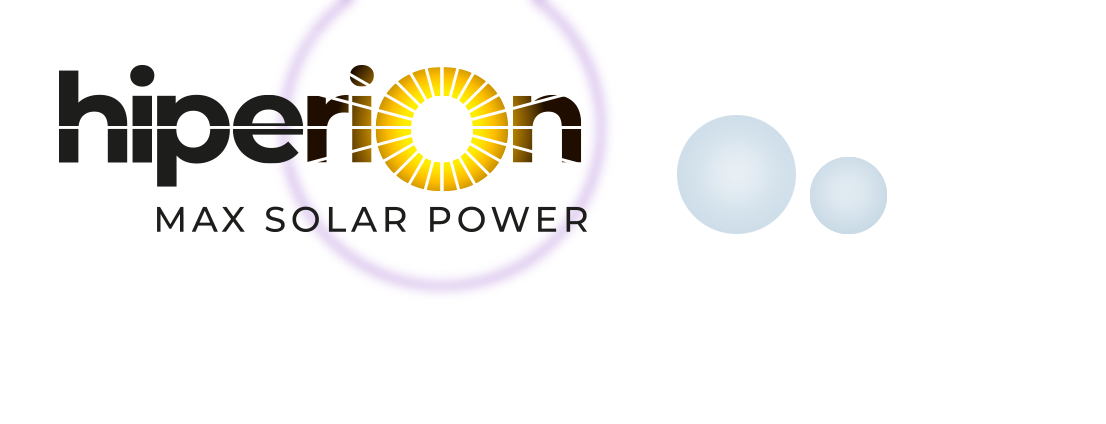Interview with Ignacio Antón, Professor at Instituto de Energía Solar, Universidad Politécnica de Madrid

Ignacio Anton has a PhD in the field of CPV characterization, Full Professor and Head of the Instruments and Systems Integration Group at the Instituto de Energía Solar, Universidad Politécnica de Madrid. He is a specialist in optical and electrical measurement of CPV systems as well as electronic design. He has published more than 170 papers in journals and international conferences on CPV. He is an active member of scientific and industrial committees devoted to CPV such as the IEC-TC82-WG7. Within HIPERION, he is the leader of the work package “Modules certification, pilot and reliability tests”. UPM is also involved in several other work packages.
Question 1 (Q1): The HIPERION project was conceived based on the existing cooperation between UPM and Insolight, which led in 2018 to the identification of a good match with the H2020 call objectives. How were the other consortium partners involved in the project? How do you assess today’s cooperation between all project partners? What are the strengths of this European consortium with regard to the project results?
Answer 1 (A1): We identified a call (LC-SC3-RES-15-2019) to Increase the competitiveness of the EU PV manufacturing industry and approached Insolight to form a consortium in spring 2018. At that moment, we were already collaborating in the framework of a Solar-Eranet project and knew the potential of Insolight module and the excellent results achieved with the first prototypes, and I assume they were also aware of our technical competence. The scope of that call was “demonstrating manufacturing innovation as well as product innovation for highly performing PV technologies”. From the very beginning, we were convinced that a static tracking-integrated hybrid micro-concentrator module, with separate capture of direct and diffuse irradiance, addressed perfectly the challenge and scope of the call and was an excellent opportunity to develop the technology to a TRL 6-7. Unlike any other high CPV module, the HIPERION module is static so it can be easily installed at fixed-mount rooftops, but still benefiting of the unbeatable efficiencies of CPV technology. The HIPERION hybrid architecture combines the high efficiency CPV based on multi-junction III-V solar cells with a backplane with mono or bi-facial Silicon cells for harvesting diffused and albedo light.
During late spring and summer 2018, we focused on the identification of the best partners to carry out firstly the huge technical challenges involved in the project, addressing the optimization of the module design, the manufacturing of the sub-parts and the design and installation of a novel pilot line. In addition, complementary partners were invited to evaluate the blueprint and carry out a market assessment with pilot installations. An excellent consortium was closed in early autumn, with 16 partners from 9 countries, including 7 SMEs, 4 renowned PV research centres, 3 solar installers and 2 partners devoted to dissemination and communication. I am privileged to have participated in 13 European projects and I can say that this is a very strong consortium, with a broad know-how and skills, and fully committed to the success of the project.
Q2: Within the work package entitled “Hybrid Module design optimization for performance, costs and reliability”, UPM provided the final indoor and outdoor GEN1 module performance results. What are UPM key assets to perform this activity? Have you faced any specific challenges?
A2: I have the honour of leading a very competent and committed research group, the Instruments and System Integration Group integrated in UPM’s Solar Energy Institute, with a background of 40 years in PV and CPV. We have a multidisciplinary approach, with expertise not only in PV technology but also in optics, electronics, instrumentation, reliability, standardization, materials and industrial processes. This is certainly our main asset, together with a passion to address engineering challenges in the PV field. The assessment of the hybrid module performance challenged our capabilities, and our characterization facilities, both indoors and outdoors, were tuned to deal with the embedded tracker to get a proper internal alignment during the characterization processes.
Q3: Within the HIPERION project, UPM is the leader of the work package entitled “Modules certification, pilot and reliability tests”. Can you explain the objectives of this work package?
A3: This work package has three main objectives. The first is the definition of the measurement procedure to rate the power of the hybrid module, this is, to determine the nominal power of the module at specific and well-defined operating conditions. This provides the nameplate power of the module, which gives the consumer a fair figure of merit comparable to any other PV technology. The second goal aims at the qualification of the module design. During the project, specific tests will be carried out to assure the capability of the module to withstand prolonged sun and weather exposure, providing feedback to the subsequent generation of the module design. And the third objective is the installation of two pilot demonstrators in Madrid and Freiburg, which data will serve as input for the electrical modelling of the hybrid CPV/PV module at different operating conditions and climates.
Q4: To what extent does the work package “Hybrid Module design optimization for performance, costs and reliability” play a key role in view of the project outcomes?
A4: The module design is the most important task to achieve not only the project goals, but also the competitiveness of the hybrid module in the market. While performance can be improved just addressing specific sources of losses, when speaking of both reliability and cost a PV module is much more than just the sum of their parts, so a holistic approach is essential in the process. The design of the hybrid module has to consider many aspects and interaction among parts, components and material properties, dealing with very tight mechanical tolerances. This work package is the most important for the success of the technology, so many partners with diverse expertise are involved. Furthermore, it is intrinsically related to other work pages related to the design of the production line and reliability assurance.
Q5: UPM and Fraunhofer ISE teams closely cooperate, as two pilot demonstrators are currently being installed in Freiburg and Madrid for performance analysis. How do you expect the performance analysis to impact the choices made towards GEN2 module design definition?
A5: These two pilot lines will be the first operating experience of hybrid CPV/PV modules, and will be completed in two phases. The first phase will include GEN1 modules: performance analysis and energy production of this module generation will be core information for the design of GEN2. We will have the opportunity to test GEN1 modules in two different climates and identify separately the contribution of the CPV and PV subsystems with diverse direct/global irradiance ratios.
Q6: UPM leads the task entitled “Definition of quality assurance tests and pre-qualification of the hybrid module”, which deals with qualification standards of PV modules. Why are its outcomes essential for the future marketing of HIPERION technology? What are the challenges of this task and how does UPM tackle them?
A6: The qualification of a PV module design, according to qualification standards, is an essential condition for the marketing of the product simply because it guarantees the technical quality in the long term. The background in the PV field over the last decades has shown that such standards reassure module manufactures to provide warranties over a long period of time. Not only final users demand the seal of quality given by the design approval standard, but also financial and insurance companies require that seal as a prerequisite for granting loans and providing insurance policies. The HIPERION hybrid CPV/PV module raises challenging issues for the design qualification that the existing standards do not address properly. This work package has a double objective, the first aims at the development of a qualification standard applicable to this concept. To do so, it is necessary to determine inconsistencies, technical limits, and lacks in the current standards for hybrid CPV/PV modules and define the modifications required to existing norms and propose new tests if needed. The second goal is to achieve a prequalified module, following the drafted standard, by the end of the project, which involves running through the drafted standard during project lifetime, testing representative samples of the subsequent module generations, adapt the tests and modify the module design according to the learned lessons.
Q8: The COVID-19 pandemic has severely hit Spain, among other countries. Have the sanitary measures affected any activities planned within the HIPERION project at UPM? How did UPM handle the crisis?
A8: Resilience is essential in any crisis, COVID-19 has tested our ability to adapt ourselves to the difficult and changing conditions. The lock-down in spring 2020 in Spain was very severe, much more than in most of other European countries. In our case, we did not only have to face how to continue with the planned activities in HIPERION, but also with the huge work overload needed to adapt teaching activities and evaluation processes to the circumstances. For better or worse, there were no leisure opportunities out of our homes, most of us worked from dawn to dusk during those months to deal with all our duties. Even so, the labs were closed and many activities were inevitably a little bit delayed. But I am proud to say that HIPERION partners showed an incredible commitment and flexibility which made things much easier and limited the deviations in the project planning.
Q9: What is the impact of the HIPERION project on your field of research?
A9: As I said before, our research group has been working on CPV technology since a long time, covering optics design, characterization and assessment of the technology, manufacturing aspects, development of test procedures and equipment and standardization. The HIPERION project gives us an opportunity to place value on this background and step forward in its application to the hybrid CPV/PV modules. In the past, CPV technologies focused on products for the market of large PV plants, where competition with the flat silicon module is harder. In the last years, the so-called area constrained PV applications, where the available area for the PV generator limits the energy generation, provide a market opportunity for high efficiency PV applications. However, classic CPV trackers are not suitable in most cases, while the static tracking-integrated hybrid micro-concentrator module addresses perfectly the requirements of these applications, providing opportunities to high efficiency solar cells, mostly used in the aerospace industry, in the terrestrial PV market.
The information, statements and opinions in the above interview are personal views of the individuals involved in the HIPERION project and do not necessarily reflect the views of the HIPERION consortium as a whole, nor of the European Commission. None of them shall be liable for any use that may be made of the information contained herein.




